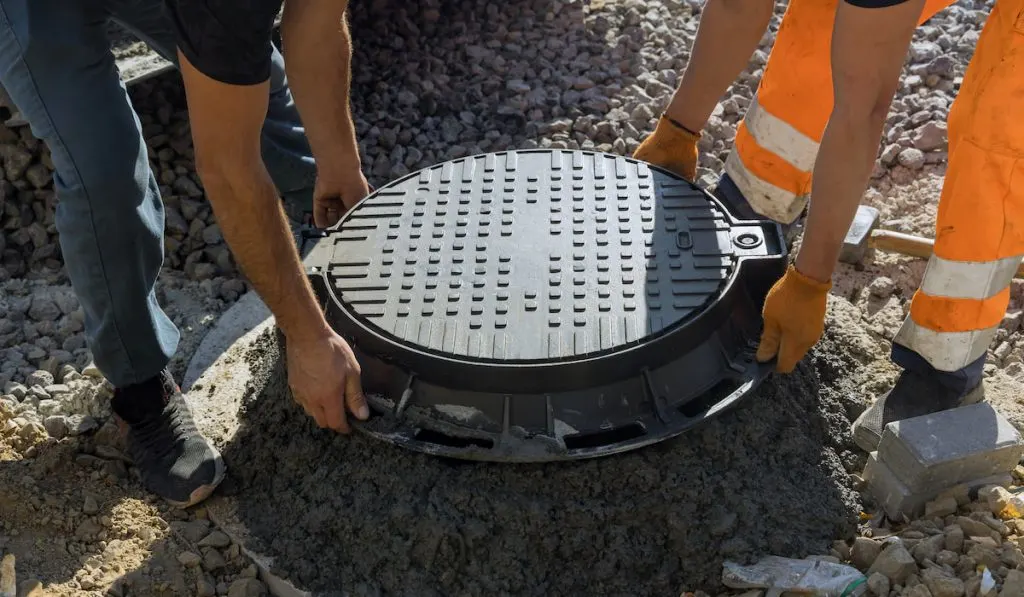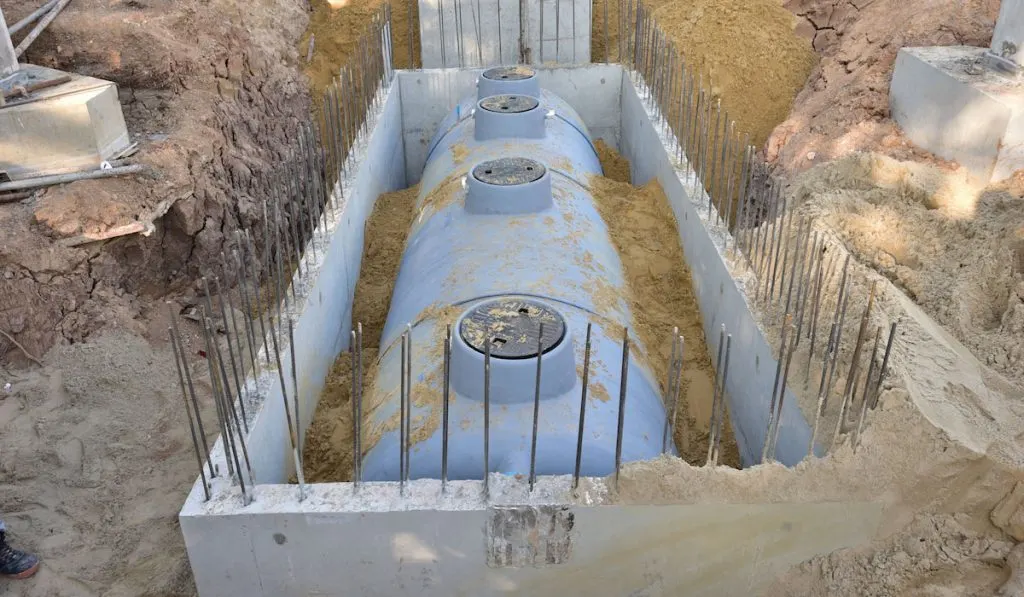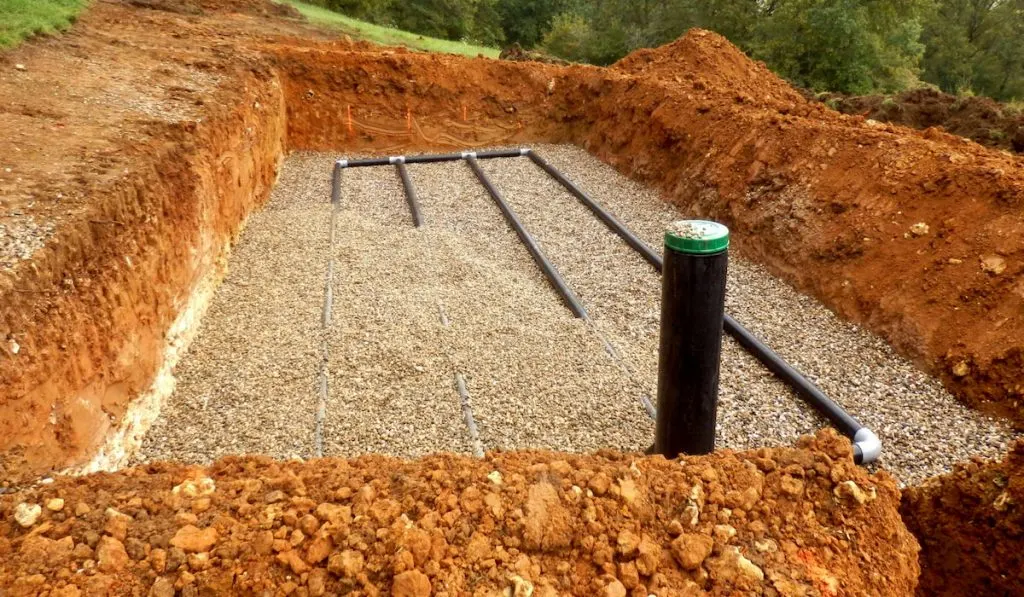If you’re thinking about getting a new septic tank for your home, you have several options to consider. Most homes come with septic systems that will last for years. As a result, we rarely have to deal with maintenance issues.
Whether you’re installing a septic system in a new home build or upgrading your existing septic tank to something newer, many different factors make a given system the best for your property.
It’s no surprise that most homeowners don’t know the differences between septic systems. The majority of people are busy with jobs and other obligations. They don’t have time to learn all of the nuances and benefits of each septic system.

However, knowing the difference between a mound system and a constructed wetland system, as well as the benefits of other types, will help you make the best decision for your property.
Here are some of the most commonly found types of septic tanks and what you should know about them.
The Septic System Basics
First, it should be said that any type of septic tank will require some type of maintenance. They need regular upkeep to ensure good performance and keep your long-term costs low. Septic emergencies are never fun, but if you own a home you’ll likely have to deal with one at some point.
Having a professional plumber or septic service on call will help you keep your system in great shape and get it back online quickly when something goes wrong.
Ultimately the system you choose will depend on your budget, performance demands, and the house location.
For example, certain systems need to be in places where no roots can grow into the tank or pipes and damage it. The slope of the ground will impact drainage, and you need space to accommodate some of the larger septic tanks out there.
All things considered, the right septic system will keep costs low and keep things working for longer.
The 9 Most Common Types of Septic System
There are many different kinds of septic systems. Depending on the property, you may need a custom system that’s built with components from multiple systems.
It’s all about what works best for your home. However, these nine common septic systems will get you started on understanding some of the varieties out there.
Here they are:
- Conventional System
- Chamber System
- Drip Distribution System
- Aerobic Treatment Unit
- Mound System
- Recirculating Sand Filter System
- Evapotranspiration System
- Constructed Wetland System
- Cluster/Community System
Conventional System
The conventional septic system is the most common and what people traditionally think of when they envision what a septic system is.
Generally, convention septic systems involve a large tank that’s buried in the yard that uses gravity to draw wastewater from the house. It’s installed at an elevation lower than the home so that, when you flush the toilet, gravity does most of the heavy lifting.

When wastewater enters the tank, the excess water drains out into the underground soil, and the solid matter settles to the bottom and starts decomposing.
The biggest concern with conventional systems is that the soil around the tank needs to be capable of taking on all of that drained water.
Most yards can handle it though, and that’s why conventional septic systems are called “conventional”. They’re easy to set up and require little maintenance.
Typically, homeowners can expect that a conventional septic system will last over 20 years. The septic pump may need repair every once in a while, but at the end of the day, it’s a good, durable solution.
Chamber System
Chamber systems are common in areas where there are high groundwater tables. They don’t have a large tank where the wastewater drains, but instead use a system of PVC chambers with open bottoms that allow excess water to feed out into the soil.
A solid pipe connected to the house’s plumbing system brings the wastewater into the chambers. These pipes are attached to the top portion of the chamber. Solid matter separates from the water and settles.
Homeowners prefer chamber septic systems because you don’t have to dig as large of a hole and maintenance is relatively easy.
Instead of having to replace a large, expensive tank, you can replace chambers as required. They also operate without any gravel, which can save you money and trouble if you have to travel a long way to get to your property.
Drip Distribution System
If your property has a challenging landscape, a lot of trees that you don’t want to dig up, for instance, then you need something less invasive than a conventional septic system.
Many homes have rocks or are located on small plots that make conventional systems unrealistic.
Instead of using a large tank, drip distribution systems function with a system of pipes that can adjust to the property’s requirements. You can dig the pipes to a relatively shallow depth and still get good results. Sometimes just eight inches is deep enough.

In these systems, the wastewater is fed through a network of pipes where the waste is then fed into the soil.
The only big concern with drip distribution is that it requires more upkeep. Rather than dealing with one large tank, you have to take care of several pipes and make sure they don’t get clogged.
Aerobic Treatment Unit
By exposing wastewater and waste matter to oxygen as it moves through the plumbing system, an Aerobic Treatment Unit hastens the breakdown process.
It makes it easier to manage waste in a smaller septic system. Once exposed to the oxygen in an aerobic system, the waster is more easily fed into the soil and is generally cleaner than waste in other types of systems.
Aerobic systems, as you may have guessed, are more expensive than conventional systems and several other types.
You’re getting a more technical waste treatment process, and it’s going to cost you. They also require more frequent maintenance to ensure that the right amount of oxygen is used.
Mound System
Mound systems are a good solution for areas where there is concern about wastewater getting into the groundwater. These are usually affordable systems that can also fit homes where the soil isn’t very permeable.
In mound systems, there is a mound where enough soil is gathered to handle waste absorption. It cannot rely as much on gravity to move wastewater through the pipes, so you’ll have to have a good pump pushing things along.
The main concerns around mound systems are they aren’t pretty to look at (you’re going to have a strange mound on your property), and sometimes you can smell waste because it’s so close to the surface.

However, using a mound system is a good, basic way to protect the water table.
Recirculating Sand Filter System
These septic systems are for property owners who need an extra layer of security when it comes to keeping the waste matter out of the groundwater.
In recirculating systems, the wastewater goes through a double sand filter before it drains out into the soil. Anything that the first sand filter didn’t catch will be covered in the second filter.
These can be more expensive than conventional septic systems due to the complexity of two filters, and you’ll need enough space for the extra layer, but it offers peace of mind that the water coming out is clean.
Evapotranspiration System
This septic setup is for property owners who live in dry areas where water is scarce or want to direct wastewater to a specific part of a yard or field.
These systems require more work when installed because the area where the wastewater is going needs to be lined with watertight material for isolation. Once the waste enters the field, it evaporates and won’t move down into the water table.
To work best, these need to be in hot climates where the sun can do the work for you. If not, you’ll have a lot of sitting water in your field.
Constructed Wetland System
These systems are designed to mirror or imitate the waste management process in natural wetland environments. Essentially, plants and other items found in natural environments filter out all of the nutrients and pathogens they need to thrive.
Usually, a waterproof lining is installed between the soil and the septic system. Then, a layer of gravel and sand go in, and finally the plants.
You can’t put just any plants in the constructed wetland system. They have to be able to live in a water-saturated area.
A constructed wetland septic system is a lot like having a garden. It needs regular maintenance and you have to tend to the wetland to make sure it’s doing the job. That means more hours spent pruning and tending.
Cluster/Community System
As you can probably tell from the name, a cluster or a community system is meant for multiple houses or buildings. Multiple pipes feed into one large septic system that handles all of the treatment required.
These are common in areas where you have houses in close proximity that need to use shared space. The challenge here is getting all of the property owners to agree, but most of the time you’ll see these in pre-planned subdivisions.

